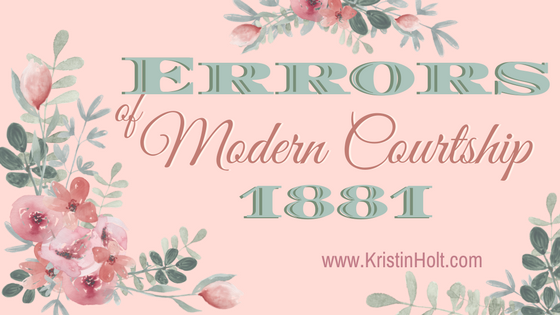
by Kristin Holt | Jul 25, 2019 | Articles
In an 1879 essay by Henry Ward Beecher, he persuades all to see that Old Maids may make the best of wives, for their youthful ways often pass right along with their marriageable years. Come mid-twenties, when a woman is an Old Maid, he argues she’s come into her prime of womanhood.
Beecher was, it seems, concerned about appearance.
What about those ladies who are consistently kind, gracious, and pleasant to be with? What of those good girls who finds no fault and never complains. Perhaps this Best Woman did make for the Best Victorian Wives.

by Kristin Holt | Jul 22, 2019 | Articles
Victorian-era American wisdom regarding romance, marriage, and courtship is fascinating! A collection of 19th century newspaper clippings provides a wide range of answers to the question: Who Makes the Best (Victorian) Wives? Throughout the late nineteenth century, much (conflicting) advice for the hymeneal-minded.
Note: Part of a blog series including Blondes are Favorites (Who Makes the Best (Victorian) Wives?).

by Kristin Holt | Jul 22, 2019 | Articles
A well-known New York Phrenologist gives late-Victorian-era American romance advice. “Blondes are Favorites,” he declared, backing up this observation with Phrenology. Much hymeneal wisdom packed into one interview, contained in the vintage newspaper article that sprang from a newspaperman interviewing the phrenologist. While affable blondes are best, beware of “Women of Genius” (those inclined to education and adopting “masculine” attributes such as self-protection and self-support). Victorian attitudes and perspectives circa 1890 shed much light on cultural norms.
Part of blog series: Who Makes the Best (Victorian) Wives?

by Kristin Holt | Nov 6, 2017 | Articles
This vintage newspaper article, printed in Washington, D.C. in 1881, speaks frankly of concerns a minister has in the way young people go about courtship. Compared to today’s parents’ and grandparents’ concerns, we might draw parallel (or direct) comparisons. Much has changed, and much stays the same.












